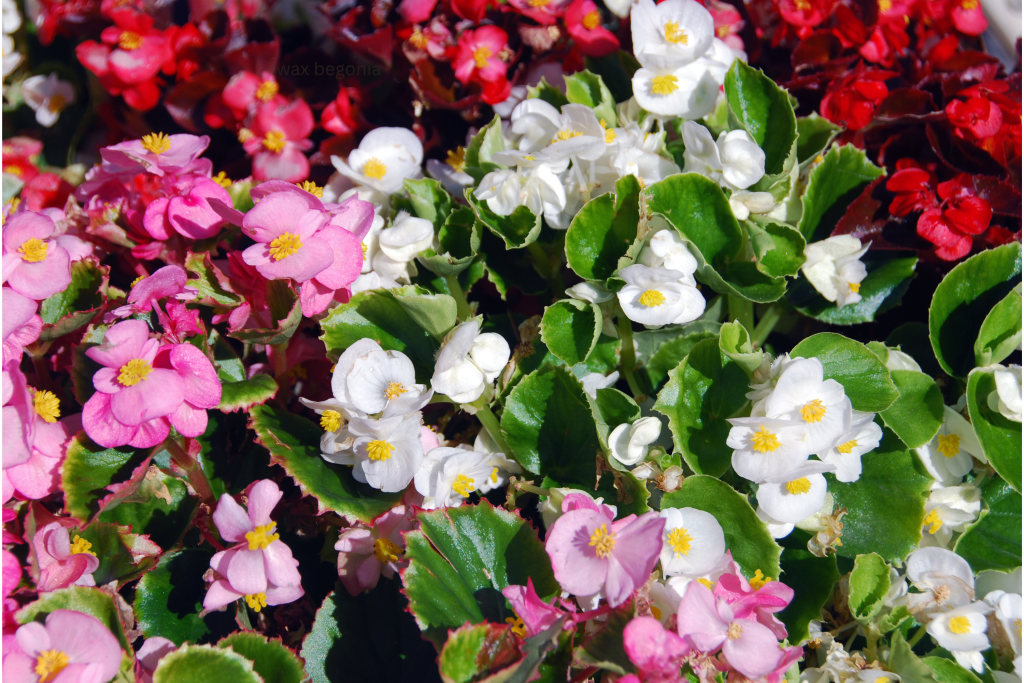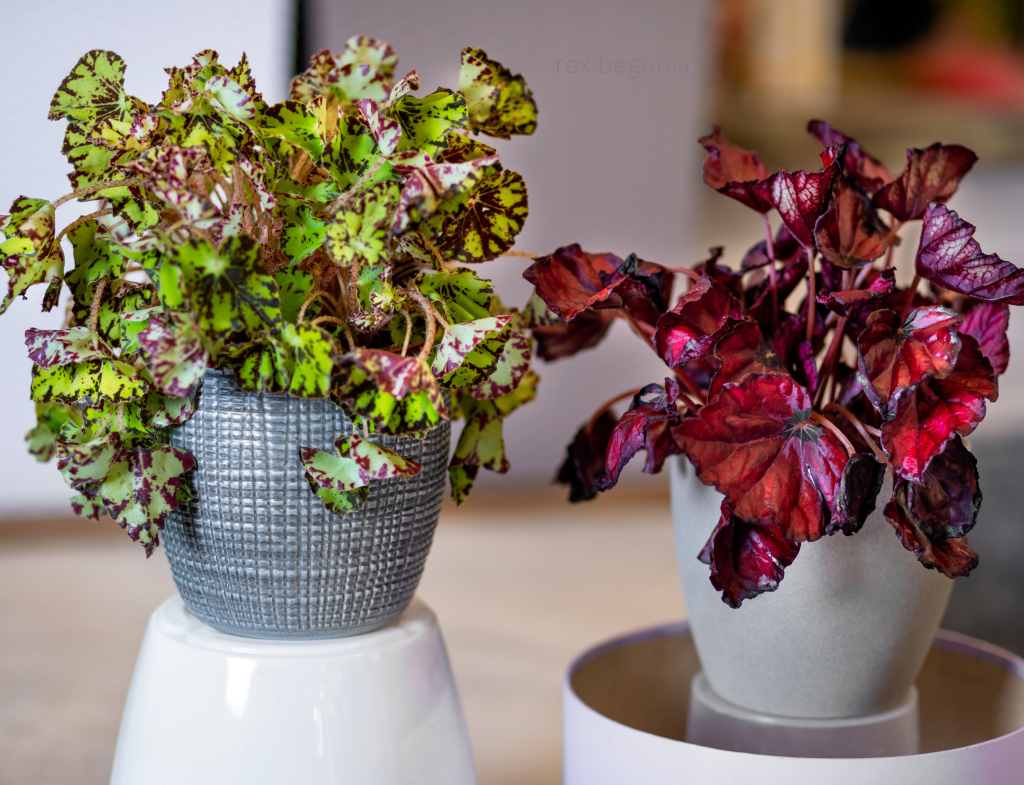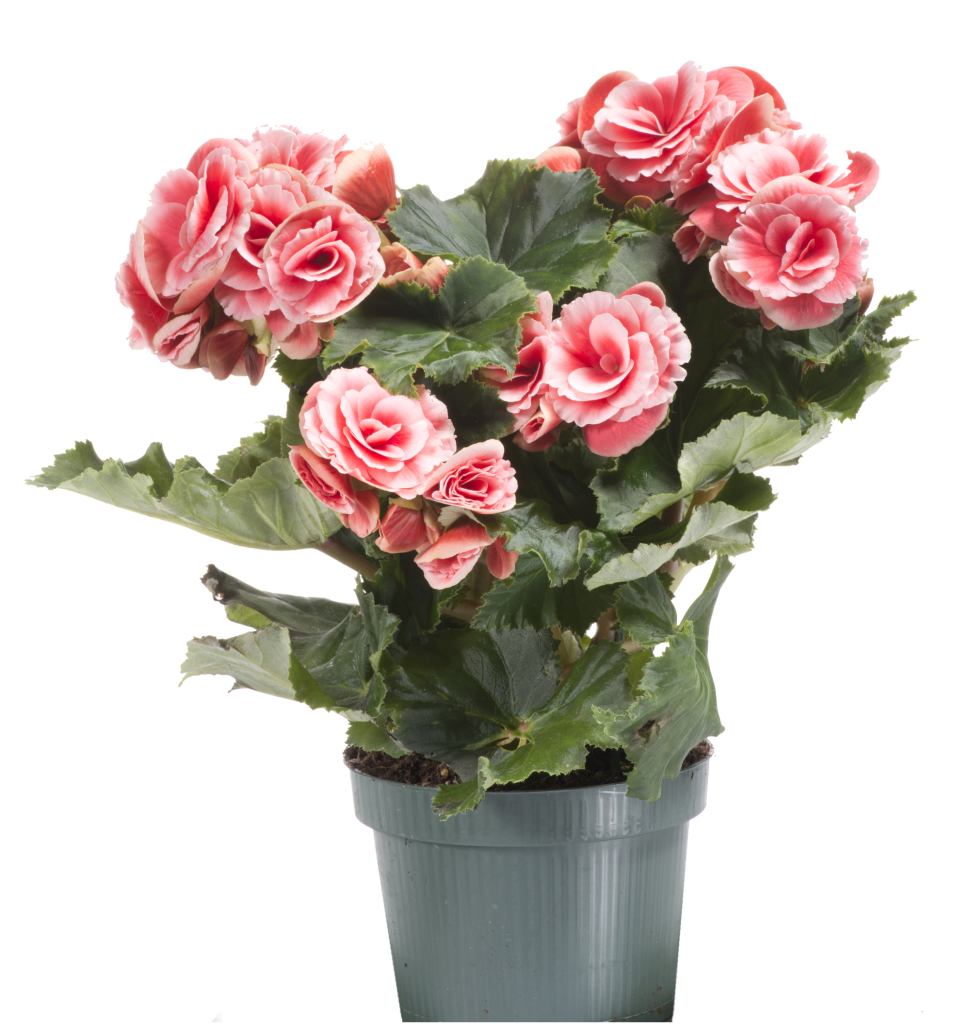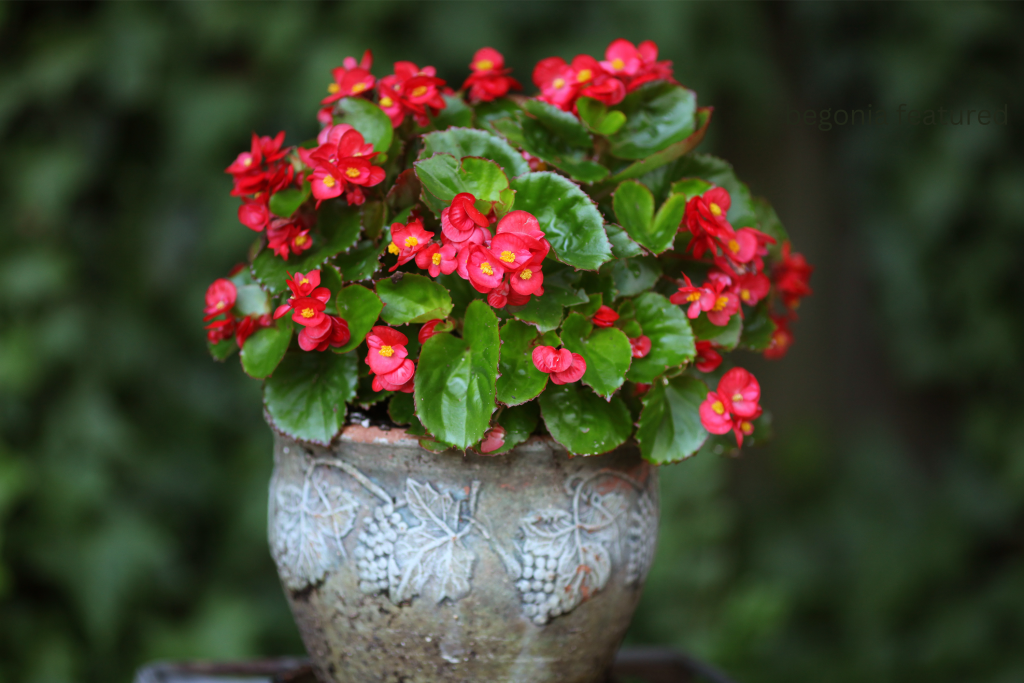Begonias are a beloved addition to many gardens and indoor plant collections, celebrated for their vibrant flowers and diverse foliage. With over 1,800 species, Begonias offer a wide range of shapes, sizes, and colors, making them a versatile choice for plant enthusiasts. In this blog post, we’ll explore the various types of Begonias, their care requirements, and tips for keeping them healthy and thriving.
Understanding Begonias
Begonias are native to tropical and subtropical regions and are prized for their ornamental value. They can be broadly categorized into three main types:
1. Fibrous Begonias

- Characteristics: These Begonias have fibrous roots and are often grown as annuals. They feature small, waxy leaves and produce clusters of flowers in shades of red, pink, white, and yellow.
- Examples: Wax Begonia (Begonia semperflorens) and Angel Wing Begonia (Begonia coccinea).
2. Rhizomatous Begonias

- Characteristics: These plants grow from thick, horizontal stems called rhizomes. They are primarily known for their striking foliage rather than their flowers.
- Examples: Rex Begonia (Begonia rex) and Beefsteak Begonia (Begonia erythrophylla).
3. Tuberous Begonias

- Characteristics: These Begonias grow from tubers and are famous for their large, showy flowers that come in a variety of colors and forms.
- Examples: Nonstop Begonia (Begonia × tuberhybrida) and Hanging Basket Begonia (Begonia boliviensis).
Growing Conditions for Begonias
To ensure your Begonias thrive, it’s essential to provide them with the right growing conditions:
Light
- Indirect Light: Begonias prefer bright, indirect light. Direct sunlight can scorch their leaves, so it’s best to place them in a location with filtered light.
- Shade Tolerance: While they enjoy bright light, many Begonias can tolerate partial shade, making them suitable for indoor spaces and shaded gardens.
Temperature
- Warmth: Begonias thrive in temperatures between 60-75°F (15-24°C). They are sensitive to cold and should be protected from frost.
- Humidity: These plants prefer high humidity, especially rhizomatous and rex varieties. Consider using a humidifier or placing a tray of water near the plants to increase humidity levels.
Watering and Soil
Proper watering and soil selection are crucial for healthy Begonias:
Watering
- Consistency: Keep the soil consistently moist but not waterlogged. Water when the top inch of soil feels dry.
- Avoid Overwatering: Ensure the pot has drainage holes to prevent water from accumulating at the bottom, which can lead to root rot.
Soil
- Well-Draining Soil: Use a well-draining potting mix rich in organic matter. A mix designed for African violets works well for Begonias.
Feeding and Fertilizing
Regular feeding ensures that your Begonias receive the nutrients they need to grow and bloom:
- Balanced Fertilizer: Use a balanced, water-soluble fertilizer every 2-4 weeks during the growing season (spring and summer). Reduce feeding during the dormant period (fall and winter).
Pruning and Maintenance
Maintaining your Begonias involves regular pruning and care:
Pruning
- Remove Dead Flowers: Deadhead spent flowers to encourage new blooms and prevent disease.
- Trim Leggy Growth: Prune back any leggy or overgrown stems to maintain a compact and bushy shape.
Propagation
Begonias can be easily propagated through various methods:
Stem Cuttings
- Cut a Healthy Stem: Choose a healthy stem and cut a 4-6 inch section just below a leaf node.
- Remove Lower Leaves: Remove the lower leaves, leaving a few at the top.
- Place in Water or Soil: Place the cutting in water or a pot filled with moist potting mix.
- Wait for Roots: Roots should develop in a few weeks, at which point you can transplant the cutting into a new pot.
Leaf Cuttings
- Choose a Healthy Leaf: Select a healthy, mature leaf and cut it off at the base.
- Slice the Leaf: Cut the leaf into sections, each with a main vein.
- Plant in Soil: Place the leaf sections on top of moist potting mix, pressing them down slightly.
- Wait for Growth: New plants will begin to grow from the leaf sections in a few weeks.
Common Problems and Solutions
Begonias can encounter several common issues, but with proper care, they can be managed effectively:
- Yellowing Leaves: This can be a sign of overwatering, underwatering, or insufficient light. Adjust your care routine accordingly.
- Pests: Watch out for pests like aphids, spider mites, and mealybugs. Treat infestations with insecticidal soap or neem oil.
- Powdery Mildew: Ensure good air circulation around the plant and avoid overhead watering to prevent fungal diseases.
Benefits of Growing Begonias
Beyond their beauty, Begonias offer several benefits:
- Versatility: With so many varieties, there’s a Begonia for every garden and indoor space.
- Long Blooming Period: Many Begonias bloom for an extended period, providing continuous color and interest.
- Air Purification: Like many houseplants, Begonias help improve indoor air quality by removing toxins.
Conclusion

Begonias are a stunning and versatile addition to any plant collection, whether you’re growing them indoors or in the garden. With their vibrant flowers and diverse foliage, they add a touch of beauty and elegance to any space. By providing the right growing conditions and care, you can enjoy the charm and splendor of Begonias all year round.



